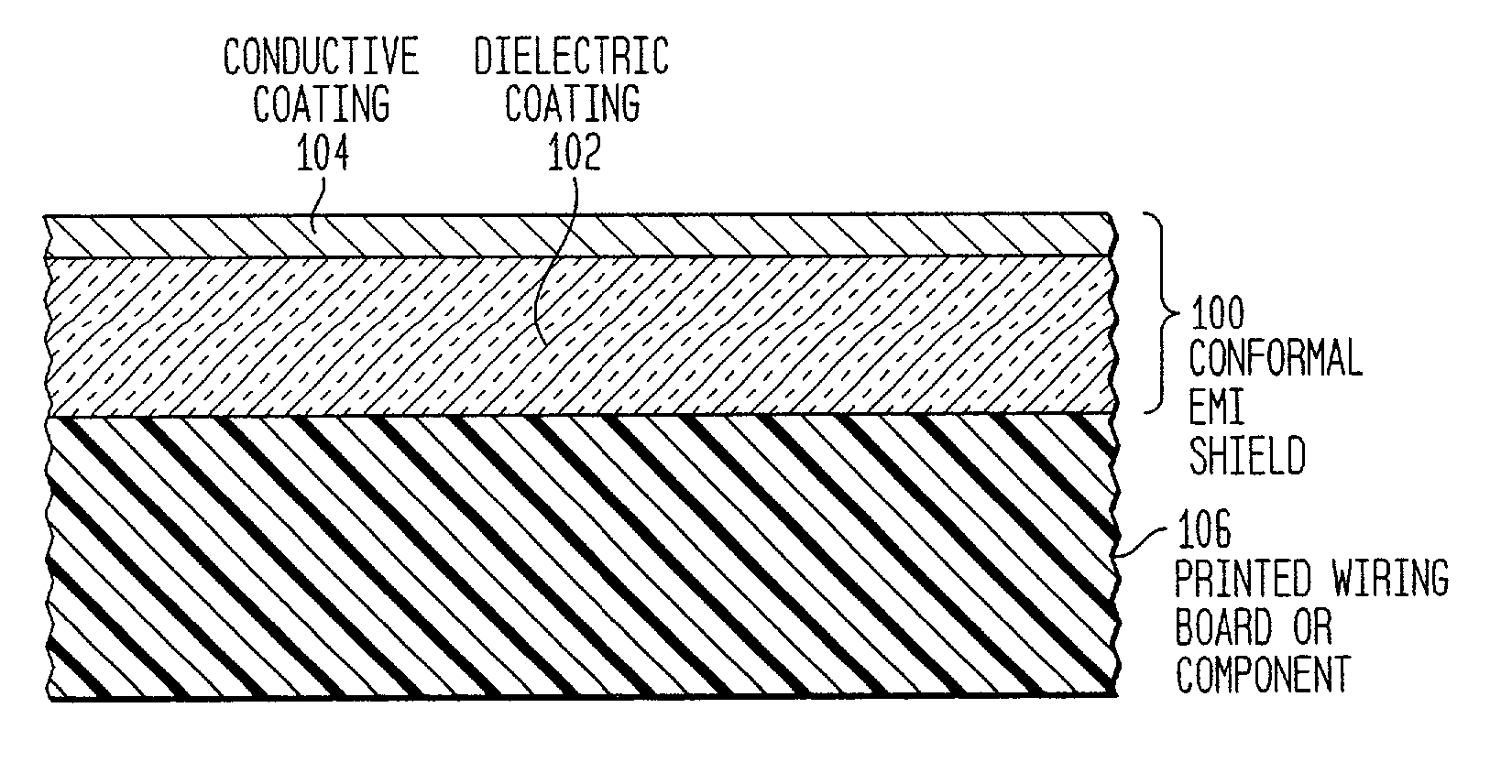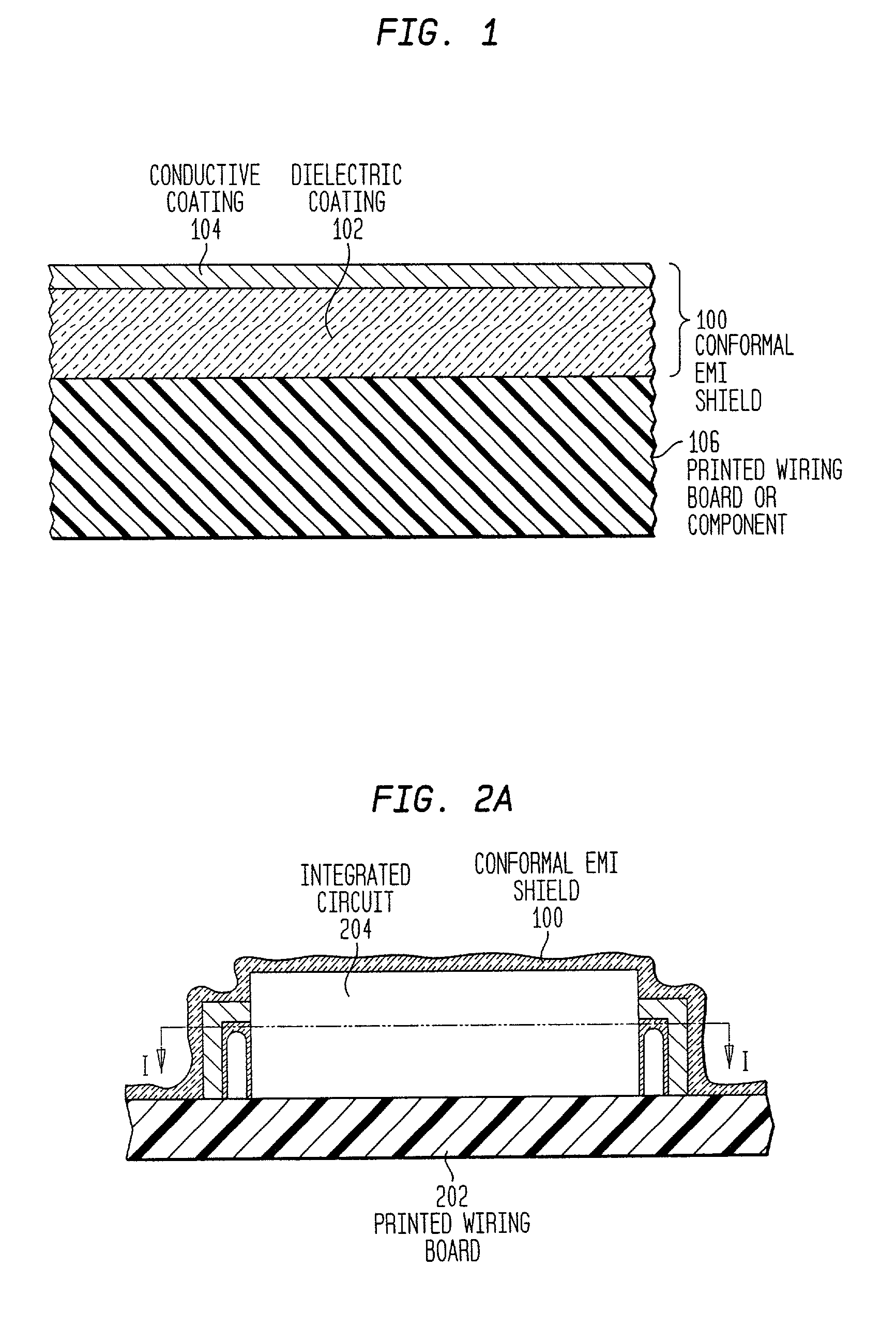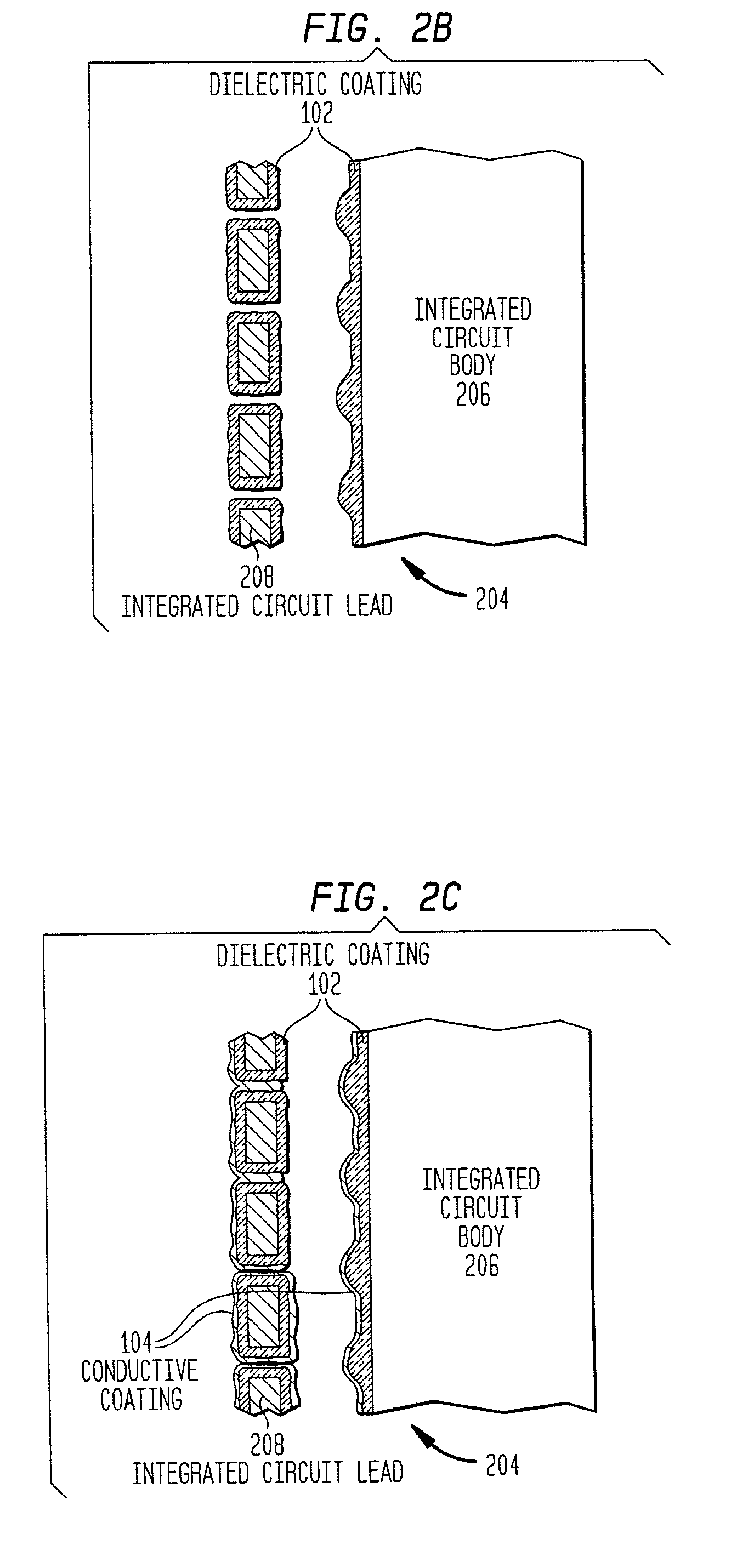Board-level EMI shield that adheres to and conforms with printed circuit board component and board surfaces
a printed circuit board and shielding technology, applied in the field of emi protective measures for printed circuit boards, can solve the problems of lack of shielding effectiveness provided by conventional metallic boxes, use of such metallic boxes, and emi, and achieve the elimination of size restrictions on the cooling holes and fan grilles on the product enclosures, the effect of reducing the cost and weight of sheet metal and eliminating the constraints on package design
- Summary
- Abstract
- Description
- Claims
- Application Information
AI Technical Summary
Benefits of technology
Problems solved by technology
Method used
Image
Examples
Embodiment Construction
[0049] Table of Contents
[0050] 1. Introduction
[0051] 2. Conformal EMI Shield Materials
[0052] A. Overview
[0053] B. Dielectric Coating
[0054] C. Conductive Coating
[0055] 3. A Printed Circuit Board With A Conformal EMI Shield
[0056] A. General
[0057] B. Printed Circuit Board Coverage
[0058] C. Grounding of Conformal EMI Shield
[0059] D. Electrically Connecting EMI Shielded Regions
[0060] E. Design of Printed Wiring Board to Accommodate EMI Shield
[0061] 4. Individual Components Coated with Conformal EMI Shield
[0062] 5. A Low Profile Component Cover For Encasing Components
[0063] 6. Filler Material For Use With Board-Level Containment of Electromagnetic Emissions
[0064] 7. Manufacturing of Printed Circuit Board With Conformal EMI Shield
[0065] 8. Closing
[0066] 1. Introduction
[0067] The present invention is directed to an electrically continuous conformal EMI protective shield and methods for applying same directly to the surfaces of one or more regions of a printed circuit board. When the EMI shi...
PUM
| Property | Measurement | Unit |
|---|---|---|
| thick | aaaaa | aaaaa |
| thick | aaaaa | aaaaa |
| thickness | aaaaa | aaaaa |
Abstract
Description
Claims
Application Information
 Login to View More
Login to View More - R&D
- Intellectual Property
- Life Sciences
- Materials
- Tech Scout
- Unparalleled Data Quality
- Higher Quality Content
- 60% Fewer Hallucinations
Browse by: Latest US Patents, China's latest patents, Technical Efficacy Thesaurus, Application Domain, Technology Topic, Popular Technical Reports.
© 2025 PatSnap. All rights reserved.Legal|Privacy policy|Modern Slavery Act Transparency Statement|Sitemap|About US| Contact US: help@patsnap.com



